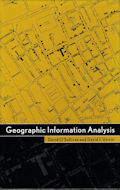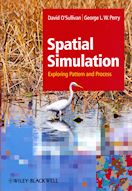Geographic Information Analysis presents clear and up-to-date coverage of the foundations of spatial analysis in a geographic information systems environment. Focusing on the universal aspects of spatial data and their analysis, this book covers the scientific assumptions and limitations of methods available in many geographic information systems.
Throughout, the fundamental idea of a map as a realization of a spatial stochastic process is central to the discussion. Key spatial concepts are covered, including point pattern, line objects and networks, area objects, and continuous fields. Analytical techniques for each of these are addressed, as are methods for combining maps, exploring multivariate data, and performing computationally intensive analysis. Appendixes provide primers on basic statistics and linear algebra using matrices.
Complete with chapter objectives, summaries, “thought exercises,” a wealth of explanatory diagrams, and an annotated bibliography, Geographic Information Analysis is a practical book for students, as well as a valuable resource for researchers and professionals in the industry.

